Infant Eczema - Possible Causes & Treatments
35 hours of research 5 minute read

Eczema, also referred to as atopic dermatitis, is a common condition in babies. Data indicates that it affects at least 60% of individuals who develop eczema during their first years of life. While there is no definitive cure for eczema, experts recommend several management and strategies. As a parent, before adopting such management interventions for eczema, you must be aware of all the details about this condition. This article explores the causes and treatment options for eczema in infants.
What is Infant Eczema?
Eczema is a chronic skin condition that has an inflammatory onset. Patients with eczema commonly report feeling itchiness and redness and often observe the appearance of rashes over the skin. While it is common in males and female adults and is a cause of concern, it is considered the most prevalent inflammatory disease of the skin in children. Studies have shown that eczema affects up to 20% of children. (1)
While itching and redness are the most common symptoms of eczema, they may also be associated with numerous changes in skin texture. These include scaling and thickening the skin, the eruption of papules and vesicles, and excoriations. It is typically found on an infant's cheeks, neck, and elbow and knee skin folds while it may affect any part of the body. In addition, hypersensitivity response in the body helps mediate the presence of eczema in children; hence it may also be associated with symptoms like food allergy, asthma, and allergic rhinitis. (2)
However, the symptoms of eczema in children are considered mild and may not be as severe as those experienced by some adults. Data shows that 84% of the children affected by eczema have a mild disease; meanwhile, only 2% may present with a severe illness. (3)
The presence or absence of IgE sensitization may help classify eczema into two types known as:
- Atopic Eczema
- Atopic Eczema
What Are The Most Common Causes of Infant Eczema?
Several risk factors may increase the risk of infant eczema. These include milk allergies, stress during pregnancy, and exposure to environmental pollutants.
1. Milk Allergy
Milk allergy is a widespread cause of infant eczema. It may present with other symptoms that are not typical of eczema, which might put off the parents about the role of an allergic reaction in causing their baby's eczema. Researchers further investigated it in a study conducted on 1749 children from birth to 3 years. 2.2% out of the 6.7% of children suspected of having researchers confirmed a milk allergy actually to have it. (4)
A Norwegian study monitored three thousand six hundred twenty-three children in a similar Norwegian study, including from birth to 2 years. Parents had to fill out questionnaires about food reactions between these two years every six months. The data collected showed cow milk allergy to be the most common finding in children before they reach the age of 1 year. (5)
2. Stressful Pregnancy
Babies are at a significantly increased risk of developing eczema during the first years of life if their mothers undergo stressful pregnancies. A German study further investigated this on 3004 children where they evaluated the mother's stress levels during pregnancy based on the questionnaire regarding unwanted pregnancy. The study results showed that the mothers who had higher stress levels during pregnancy had a higher risk for their babies having eczema up to the age of 2 years. However, after they reach their second years of life, they are no longer at an increased risk. (6)
3. Environmental Pollutants
Babies with higher exposure to certain environmental pollutants like chemicals, irritants, and toxins are often at an increased risk for eczema. These pollutants may also include increased carbon monoxide, ammonia, formaldehyde, and lead levels in the atmosphere.
Treatment of Infant Eczema

The most effective methods for infant eczema treatment include the replacement of infant milk formula, corticosteroid ointments, and bleach bath therapy.
1. Removal of Triggers
It is essential to recognize the risk factors responsible for aggravating eczema. Parents need to notice every new thing the baby encounters and maintain a pool of factors that may be causing the symptoms to worsen. The most common triggers responsible for eczema in children include sweating, salivation, soaps, laundry detergents, or baby wipes. Low-quality cow-based baby formulas are another potent stimulus, and removal of these triggers can lead to almost instant relief for the baby.
2. Application of Topical Steroid Ointments
The corticosteroids in the ointments or creams designed for infant eczema help reduce the skin's inflammatory activity. The baby can get relief from symptoms like itching and redness by controlling the inflation. Before using steroid-based creams, ointment lotion, or sprays on the baby, it is essential to consult with a pediatrician or a dermatologist. After the consultation with experts, the parents can use such ointments following the doctor's recommendations regarding the amount, duration, and frequency of application.
3. Bleach Bath Therapy
If all other methods fail to control the infant's eczema, the parents can consider bleach bath therapy. It is often not advised for babies as the first treatment choice, even though adults with eczema can do it. It is usually considered only in severe conditions. This therapy involves bathing the baby in a diluted bleach batch, which may help reduce the inflammation-causing factors like bacteria from the skin. However, it must only be conducted after the doctor's recommendation while strictly following their instructions for each step.
Hypoallergenic Formula For Eczema
Among numerous causes of infant allergy discussed above, one of the most common risk factors is infant milk allergy. The infant may likely be allergic to the formula milk used by parents. It is essential to note the signs they may exhibit following IgE sensitization because of cow milk. These may include eczema, vomiting, diarrhea, and abdominal pain. (7)

These parents should switch their infant formula milk to hypoallergenic or goat milk. The hypoallergenic formulas are different from the regular cow milk formulas because they contain hydrolyzed proteins. These commonly include heat treatment and ultrafiltration. Organic Life Start has some excellent goat milk options for children.
✓Contains Probiotics & Prebiotics
✓ No sugar, no corn syrup, no soy
✓ Hydrolyzed milk proteins reduce allergic reactions
✓ Popular for babies with eczema
Check Price✓ Has Prebiotics and Probiotics
✓ Hydrolyzed milk proteins reduce allergic reactions
✓ No sugar, no corn syrup, no soy
✓ Easy to digest formula for sensitive babies
Check Price✓ Contains a patented blend of prebiotics GOS/FOS
✓ Has no added lactose
✓ Hydrolyzed milk proteins reduce allergic reactions
✓ Popular for the dietary management of cow’s milk protein allergy (CMPA)
Check PriceThis processing results in the baby formula containing partially or entirely hydrolyzed proteins instead of the long-chained proteins found in the regular cow milk formulas. The breaking down of the proteins allows them to be digested and absorbed more easily by the infant's digestive system. Nonallergenic milk formulas contain mixtures of pure amino acids, which quickly digest into the infant's gut.
Hence, when an infant develops a milk allergy, parents are recommended to get them tested to determine the severity. While some babies may find relief from only switching to the hypoallergenic formulas which contain broken-down proteins, others may not even be able to tolerate this and require amino acid mixtures.
Some experts have suggested other ways to cater to the milk allergy experienced by infants, including early exposure to the triggering factors, as this may help the baby develop immune tolerance (8).
However, other experts debate that avoiding the antigen altogether may be better. You can feed the baby a hypoallergenic or a goat milk-based formula. Due to this, the infants have minimal exposure to the milk proteins, which may be causing hypersensitivity in their bodies.
The most effective way of feeding infants with suspected milk allergy, as proven by studies, includes feeding them a hypoallergenic formula while avoiding any solid foods for at least 4 to six months of their life. It helps prevent the onset of milk allergy symptoms like eczema and may even prevent the incidence of cow milk allergy altogether. (9)
Other Popular Formula Options For Eczema
There are other popular infant formula options specially crafted to provide comfort and nourishment to babies with eczema. While these formulas may not be classified as hypoallergenic, they are thoughtfully designed to be easy on delicate tummies, offering a viable choice for parents seeking gentle nutrition for their little ones with skin sensitivities.
✓ Contains Probiotics & Prebiotics
✓ No sugar, no corn syrup, no soy
✓ Reduced lactose with hydrolyzed milk protein
✓ Easy to digest formula for sensitive babies
Check Price✓ Contains Prebiotics, DHA, and ARA
✓ No sugar, no corn syrup, no soy
✓ Reduced lactose with hydrolyzed milk protein
✓ Popular for gentle formula
Check Price✓ No sugar, no corn syrup, no soy
✓ Reduced lactose
✓ Hydrolyzed milk proteins reduce allergic reactions
✓ Easy to digest formula
Check PriceBest Baby Formula For Eczema
Eczema or atopic dermatitis is amongst the most common inflammatory skin condition affecting infants and children. It may not be a source of significant discomfort for the baby but may interfere with their growth and development due to the inadequate nutrients consumed. Some babies with a milk allergy may have eczema as the primary symptoms; others may have asthma and allergic rhinitis. Since there is no definite cure for eczema, if it is necessary to focus on the possible allergic triggers and eliminate them. One of these is cow's milk allergy, which you may manage by replacing the infant formula with hypoallergenic or non-allergic products.
Best Formula For Babies With Eczema
References:
- Odhiambo, J. A., Williams, H. C., Clayton, T. O., Robertson, C. F., Asher, M. I., & ISAAC Phase Three Study Group (2009). Global variations in prevalence of eczema symptoms in children from ISAAC Phase Three. The Journal of allergy and clinical immunology, 124(6), 1251–8.e23. https://doi.org/10.1016/j.jaci.2009.10.009
- Beck, L. A., & Leung, D. Y. (2000). Allergen sensitization through the skin induces systemic allergic responses. The Journal of allergy and clinical immunology, 106(5 Suppl), S258–S263. https://doi.org/10.1067/mai.2000.110159
- Emerson, R. M., Williams, H. C., & Allen, B. R. (1998). Severity distribution of atopic dermatitis in the community and its relationship to secondary referral. The British journal of dermatology, 139(1), 73–76. https://doi.org/10.1046/j.1365-2133.1998.02316.x
- Høst, A., & Halken, S. (1990). A prospective study of cow milk allergy in Danish infants during the first 3 years of life. Clinical course in relation to clinical and immunological type of hypersensitivity reaction. Allergy, 45(8), 587–596. https://doi.org/10.1111/j.1398-9995.1990.tb00944.x
- Høst A. (2002). Frequency of cow's milk allergy in childhood. Annals of allergy, asthma & immunology : official publication of the American College of Allergy, Asthma, & Immunology, 89(6 Suppl 1), 33–37. https://doi.org/10.1016/s1081-1206(10)62120-5
- Sausenthaler, S., Rzehak, P., Chen, C. M., Arck, P., Bockelbrink, A., Schäfer, T., Schaaf, B., Borte, M., Herbarth, O., Krämer, U., von Berg, A., Wichmann, H. E., Heinrich, J., & LISA Study Group (2009). Stress-related maternal factors during pregnancy in relation to childhood eczema: results from the LISA Study. Journal of investigational allergology & clinical immunology, 19(6), 481–487.
- Flohr, C., Weiland, S. K., Weinmayr, G., Björkstén, B., Bråbäck, L., Brunekreef, B., Büchele, G., Clausen, M., Cookson, W. O., von Mutius, E., Strachan, D. P., Williams, H. C., & ISAAC Phase Two Study Group (2008). The role of atopic sensitization in flexural eczema: findings from the International Study of Asthma and Allergies in Childhood Phase Two. The Journal of allergy and clinical immunology, 121(1), 141–147.e4. https://doi.org/10.1016/j.jaci.2007.08.066
- Koplin, J. J., Osborne, N. J., Wake, M., Martin, P. E., Gurrin, L. C., Robinson, M. N., Tey, D., Slaa, M., Thiele, L., Miles, L., Anderson, D., Tan, T., Dang, T. D., Hill, D. J., Lowe, A. J., Matheson, M. C., Ponsonby, A. L., Tang, M. L., Dharmage, S. C., & Allen, K. J. (2010). Can early introduction of egg prevent egg allergy in infants? A population-based study. The Journal of allergy and clinical immunology, 126(4), 807–813. https://doi.org/10.1016/j.jaci.2010.07.028
- Høst, A., & Halken, S. (2004). Hypoallergenic formulas--when, to whom and how long: after more than 15 years we know the right indication!. Allergy, 59 Suppl 78, 45–52. https://doi.org/10.1111/j.1398-9995.2004.00574.x


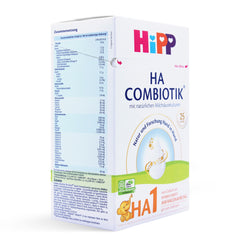
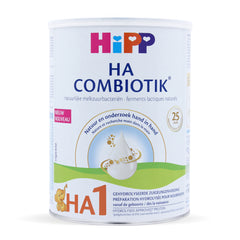
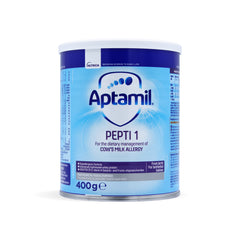

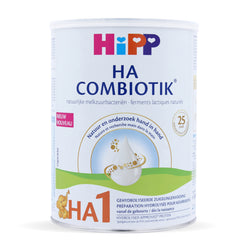
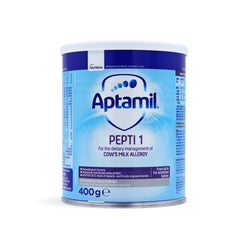
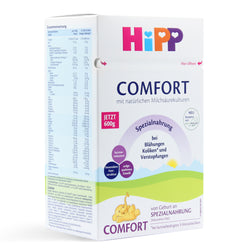
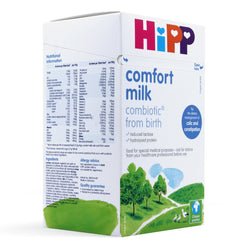
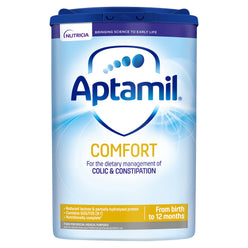






Mohamed Holm -
I read about switching to goat milk formula for babies with eczema, but I’m not sure if it’s really worth it. Has anyone tried it and seen improvements? My little one has mild eczema, and while it’s not too bad, I’d love to find something that could help calm their skin. I’m also wondering if a hypoallergenic formula is a better route. Any firsthand experiences would be so helpful!
Cortez Cavazos -
We gave Kendamil Goat a try after struggling with eczema flare-ups linked to cow’s milk formula, and it honestly felt like turning a corner. I didn’t expect a formula swap to impact her skin, but within a week, the redness and itching eased up noticeably. We didn’t change anything else in her routine, so I really believe the gentler proteins in goat milk made a difference. It’s not a miracle cure, but for our baby, it brought some much-needed comfort.
Oliver Mims -
We’ve definitely seen a difference since switching to a hypoallergenic formula—our little one’s skin isn’t as inflamed, and there are fewer flare-ups. HiPP Comfort works well with my LO. Fragrance-free skincare has been a game changer, too, especially with gentle oat-based lotions. We also started keeping a journal, and dairy seems to be a big trigger for us. Have you tried any specific formulas that worked well for eczema and allergies? Always looking for more recommendations!